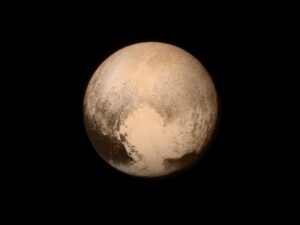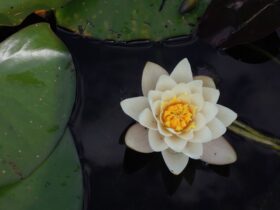As the Universe unfolds right before our eyes, it allows us to explore more space possibilities and probe some of the most peculiar cosmic features. And the recent event is no exception.
New research offers a new perspective of the red plains of Pluto’s Cthulhu Macula, finally answering the question: what’s in the composition of these strange red plains?
Here is what you need to know.
Exploring Pluto’s Plains and Finding Deep-buried Secrets

A team of researchers led by Marie Fayole, an aerospace engineer of the Delft University of Technology, joined forces and succeeded in finding more data about Pluto’s red plains.
Study insights
The team created tholins in the lab to compare how they reflect light against the observations of Pluto. The results are genuinely intriguing.
FACT: tholins are some organic compounds in the atmosphere responsible for producing the reddish plains.
Researchers discovered that the spectral signatures don’t match. So, tholins aren’t the only things that made Pluto’s red patches.
New data
Researchers explain:
“Nevertheless, a misfit of the red visible slope still remains and tholins absorption bands present in the modelled spectra are absent in those collected by the New Horizons instruments.”
So, the team came up with another possibility. Pluto’s plains are red because of the sublimation of ice.
As per previous findings, the red plains are right at the equator, where Pluto is warmer. That’s a reason why they don’t possess that much nitrogen ice.
Finally, a second possibility suggests that due to the dwarf planet’s weak gravity, the deposition of tholins is soft, creating a porous, fluffy crust.
More data will be soon available as the team will determine the validity of those models. Still, one thing is certain.
We’re finally closer to better understand Pluto’s interactions with its atmosphere. Even if it’s a dwarf planet, it sure has some deep-buried secrets.























Leave a Reply